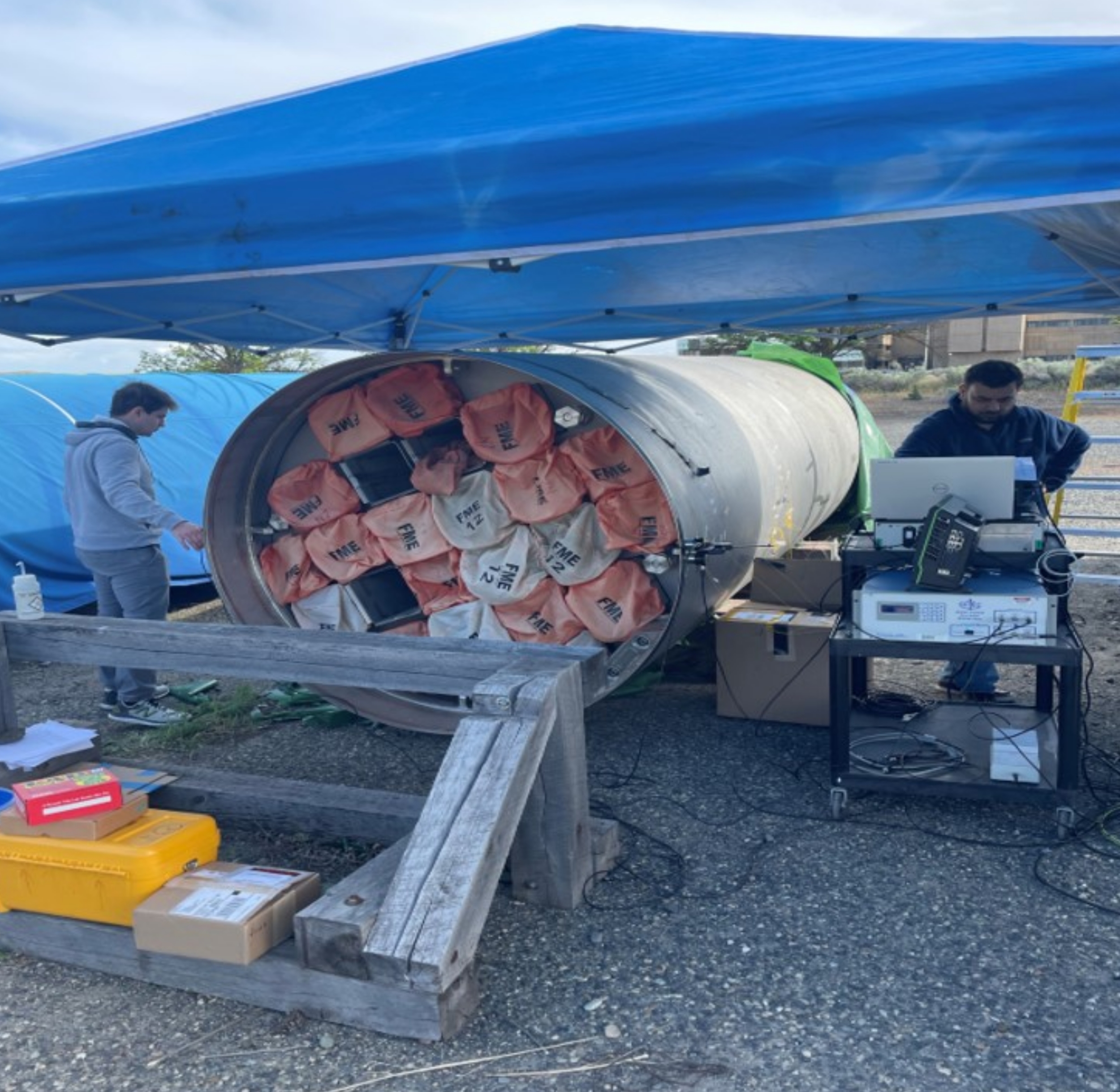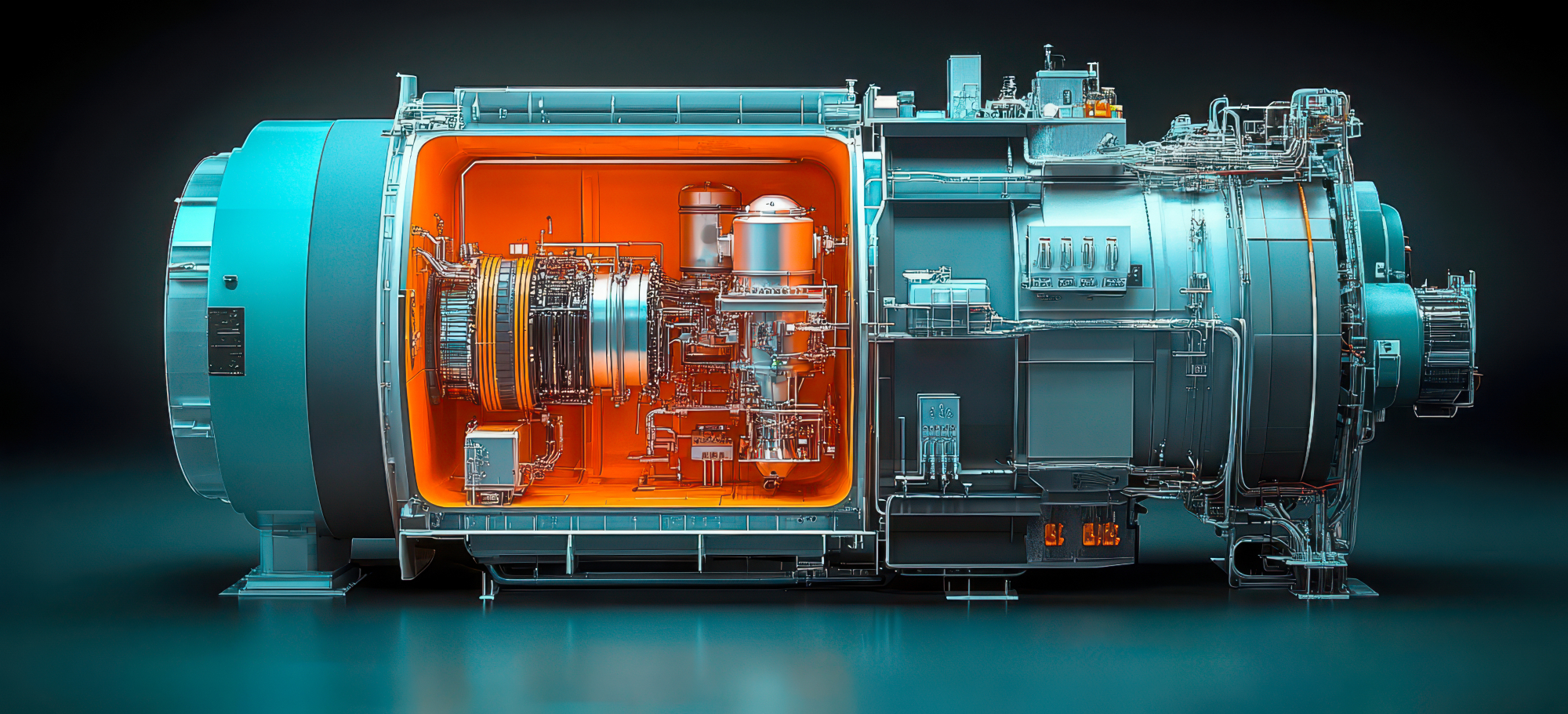Projects
Bridge Load Ratings

The objective of this research project is to create the digital twins of a few selected Pennsylvania bridges using a commercial finite element code and perform a static analysis of these bridges to recognize glaringly over-conservative postings. The results will be then compared to the results of simplified bridge representations that simulate a more automated process in which the model does not need to be built “manually”. The comparison will establish the accuracy and reliability of the semi-automatic approach for determining whether posting is over-conservative.
- PI: P. Rizzo
Hybrid Distributed pH, CO2, Temperature, and Acoustic Sensing for Monitoring and Verification of Marine Carbon Dioxide Removal Applications

A marine deployed optical fiber distributed chemical sensing (DCS) and distributed physical parameter (temperature - DTS) sensing system for measurement, reporting, and verification (MRV) of marine carbon dioxide removal (mCDR) is being pursued under this project, funded by ARPA E underSEA CO2 program. Using chemically selective and optically sensitive coatings for DCS, the proposed project seeks to integrate a fiber optic sensing technology into low-cost commercial fibers used for buoy-based marine sensor systems. DTS customization will also be pursued for integration with marine sensor systems, having a specific focus on deployable marine buoy systems including system weight and power (SWAP), data, and communications requirements.
- PI: Paul Ohodnicki
- Co-PI: Khurram Naeem (University of Pittsburgh)
- Co-PI: Ruishu Wright (NETL)
- Co-PI: Evan Shapiro (Sofar Ocean)
Student Participants: Devika Mohan and Jahid Inam Chowdhury
Faculty/Research Participants: Khurram Naeem and Tulika Khanikar
Collaborators: National Energy Technology Laboratory - Pittsburgh, Sofar Ocean, and Lightera (formerly OFS)
AI-Enhanced Distributed Optical Fiber Sensing Technology for Real-Time Monitoring of Dry Cask Storage Systems

Acoustic nondestructive evaluation (NDE) will be combined with distributed fiber optic sensing enhanced by artificial intelligence (AI) frameworks to quantitatively characterize the internal state of dry cask storage systems (DCSS). Physics-based simulations and reduced order modeling will be coupled with targeted experiments to train and apply AI-classification to distributed acoustic data acquired with fiber optics. The project covers aspects of design, fabrication, and testing of optical fiber sensors for DCSS monitoring, demonstrating new concepts in acoustic fiber optic sensing and data interpretation with AI.
- PI: Paul Ohodnicki
Student Participant: Enrico Sarcinelli
Faculty/Research Participant: Khurram Naeem, PhD
Growth of Yttrium Iron Garnet (YIG) Single Crystal Fiber

This project focuses on the fabrication of single crystal fibers (SCFs) of yttrium iron garnet (YIG), a ferrimagnetic oxide widely used in microwave, magneto-optical, and spintronic applications. The fibers are grown using the Laser Heated Pedestal Growth (LHPG) technique, which enables crucible-free, directional solidification with high purity and control. Key objectives include optimizing growth parameters, enhancing crystallographic alignment, and improving magnetic and optical properties through compositional tuning and flux-assisted growth (e.g. B₂O₃). The resulting YIG SCFs are characterized using techniques including VSM, EBSD, and SC-XRD to assess their structural and magnetic anisotropy. This work supports the development of next-generation magnetic field sensors and integrated photonic devices.
- PI: Jun Young Hong
Collaborators: Dolendra Karki (NETL, Upitt)
Electrical Grid Application Sensing

For US to reach net zero carbon emission by 2050, improved operational integration of renewables must apply to all tiers of utility and grid operators, including small rural and low-income. Co-operatives (Co-ops) serve ~56% of national land mass and play a vital part in transformation to renewables. Enhanced measurement and sensing is key with current solutions viewed as too expensive and challenging to justify to ratepayers and operators. We seek to provide under-served rural and small electric utilities with visibility behind the meter (BTM) for broad adoption of PV and other renewables. Research leverages outcomes of Grid Modernization Laboratory Consortium (GMLC) initiatives with focus on transitioning for real-world impacts. We combine low-cost distributed sensors and virtual inverter “sensors” with data aggregation / conditioning, distributed analytics, and utility communication enabled via distribution level PMU “aggregators”. The team includes complementary capabilities from academia, DOE labs, industry, and rural utility partners.
- PI: Paul Ohodnicki
- Co PI: Dr. Subhashish Bhattacharya
- Co PI: Dr. Ganapathi Subramania
- Co-PI: Meredith Miller
Student Participants: Yang-Duan Su, Mehrnaz Madadi, Lokesh Kondapaneni, Heather Phillips, and Carter Leatherman
Faculty/Research Participants: Dr. Dolendra Karki, Dr. Richard Beddingfield, Dr. Ganapathi Subramania, and Dr. Pengyuan Wang
Collaborators: GE Vernova Advanced Research, Sandia National Laboratory, North Carolina State University, National Rural Electric Cooperative Association
Monitoring of Molten Salt and Other Nuclear Reactor Application Environments with Optical Fiber Sensors

The scope of this project is to use fiber optic sensors in nuclear generation application environments for both structural health monitoring and operational optimization, including high temperature molten salts.
- PI: Paul Ohodnicki
- PI: Zack Harris
Student Participants: Ian Hendricks and Isabelle Heintz
Faculty/Research Participant: Khurram Naeem
Natural Gas Pipeline Sensing

This project aims to develop an intelligent, AI-driven pipeline monitoring system that overcomes the challenge of limited real-world defect data by integrating fiber optic acoustic sensing with a novel hybrid dataset approach. By combining experimentally measured guided wave signals with extensive simulated data generated from physics-based models of various defects, the system utilizes Convolutional Neural Networks (CNNs) for highly accurate defect classification and characterization. Crucially, advanced domain adaptation techniques are employed to ensure the AI models trained on synthetic data generalize effectively to real-world scenarios, thereby enabling robust predictive maintenance, enhancing safety, and improving the overall structural health monitoring of natural gas pipelines.
- PI: Paul Ohodnicki
- Co PI: Dr. Khurram Naeem
Student Participant: Enrico Sarcinelli and Pengdi Zhang
Faculty/Research Participants: Bukka, Sandeep R., Nageswara Lalam, and Khurram Naeem
Collaborator: National Energy Technology Laboratory

